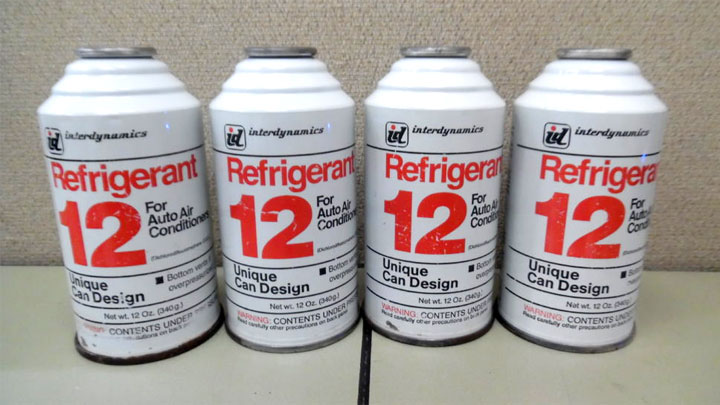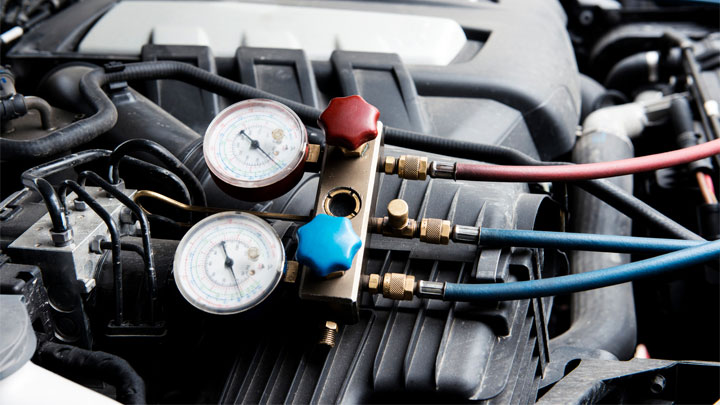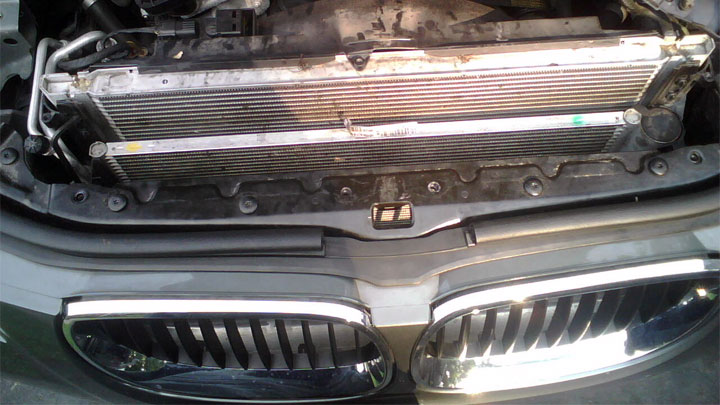Last Updated on November 14, 2022
Have you ever wondered what it would be like if vehicle’s didn’t have air conditioning? Nobody wants to drive in the simmering heat of summer, as they are forced to wipe the sweat away from their brow.
A functional A/C system stops summer heat in its tracks, taking the edge off of even the balmiest afternoon commute. However, even the most robust of automotive air conditioning systems are of little value if not properly charged with freon.
Freon, also referred to by many as refrigerant, is the lifeblood of any air conditioning system, facilitating the cooling process as a whole. While freon doesn’t get used up like gasoline, leaks (no matter how miniscule) can occur in any vehicle and its depletion can prevent your A/C from working as it should. At that point, adding more refrigerant (aka: recharging) is necessary.
Knowing this, it is little wonder that many motorists find themselves questioning whether or not their vehicle’s air conditioning needs to be recharged. While this is quite a valid question in its own right, there are several tried and true ways to identify the need for A/C system service, many of which can prove helpful when attempting to discern the answer to this question.
Read on to learn more about determining whether or not your vehicle’s A/C system needs to be recharged, as well as several other helpful tips regarding A/C system maintenance.
See Also: Does Running Your A/C Use Gas?
What is Freon?
As mentioned above, freon is the layman’s term for specialty refrigerant used within various types of air conditioning-related applications. Freon comes in various types and sub-groups, each of which has its own special properties.
The type of freon used in a particular HVAC system also tends to be application specific, meaning that it is formulated to be most efficient when employed in certain systems.
The working term “freon” is actually a derivative of a trademarked title held by Dupont, which is used to describe a colorless, non-combustible substance that is capable of undergoing changes in state as desired when circulated throughout an air conditioning system.
As this substance changes state from a gas to a liquid, and back again, heat/humidity is alleviated within a confined space.
Types of Freon
The vast majority of vehicles on the road today utilize one of two different refrigerants, which include R-12 and R134a.
R-12

For years, R-12 was the primary refrigerant used in automotive production. However, this is no longer the case. R-12 has now been categorized as a major pollutant and has since been mandated for the elimination of use by the EPA.
To meet such mandates, many manufacturers began transitioning away from R-12’s use in the mid-1990s.
R134a

This transition resulted in the widespread use of R134a as the refrigerant of choice in automotive production. This is within the industry that R134a maintained for over two decades, with the vast majority of vehicles on the road today still using this type of refrigerant.
R1234YF
Nonetheless, a newer type of refrigerant, R1234YF, has become quite popular in recent years and has proved quite prominent in late model production.
Signs You May Be Low on Freon

There are several different signs that can be used to identify a vehicle in desperate need of an A/C system recharge. Recognizing these signs can prove key when attempting to optimize the efficiency of your vehicle’s A/C system.
The following are a number of the most noteworthy signs that your car’s A/C system might be low on freon.
Related: 4 Symptoms of an Overcharged A/C System
#1 – Lack of Cooling
One of the most obvious signs of low freon is a relative lack of cooling efficiency from a vehicle’s A/C system. Without adequate refrigerant, an A/C system is unable to function reliably and will do little to take the edge off of summer’s brutal heat.
Furthermore, if an A/C system is low enough on refrigerant, its compressor clutch will likely be disabled via the system’s pressure switch.
#2 – Inoperability of A/C Clutch
As mentioned above, a significant lack of refrigerant within a vehicle’s A/C system can cause reduced system pressure, thereby triggering compressor clutch lockout via the system’s independent pressure switches.
When this condition exists, a motorist will be unable to hear a vehicle’s compressor clutch cycling as they otherwise would.
#3 – Oily-Stains on A/C Lines and Components
If severe enough, an A/C system leak will often leave traces of compressor oil on the face of any component or line within close proximity to its source.
These are some of the same trace markers that are used by technicians to identify leaks of varying severity, some of which require the use of a black light to locate them.
#4 – Appearance of Bubbles in Sight-Glass
A number of older automotive A/C systems featured a sight-glass on varying components within their high-pressure sides. These sight glasses were used to identify the level of refrigerant within the system itself.
A lack of refrigerant within the system was indicated by the observation of bubbles within this sight glass.
How Often Does a Car A/C Need To Be Recharged?

The exact period of time in which a vehicle’s A/C system can operate without being recharged is completely dependent upon how tightly the system in question is sealed.
When new, all seals found within a vehicle’s air conditioning system are largely pliable and free of any degradation. For this reason, many vehicles will require no recharging of the A/C system for their first 4-5 years of service.
However, with time, the seals found within the A/C system begin to dry out, weaken, and degrade, thereby permitting a certain degree of leakage. The more severe this leakage, the more often a vehicle’s A/C system will need to be charged.
In fact, it is not uncommon for older vehicles to require A/C system recharging every 1-2 years.
How Much Freon Does a Car Hold?
Air conditioner refrigerant capacities vary from one vehicle to the next and are directly dependent upon the volume of the system itself.
Consequently larger systems, such as those found in full-size trucks and SUVs, hold approximately double the refrigerant of compact passenger cars. This number capacity tends to be even greater for a vehicle rear-compartment A/C.
The vast majority of today’s passenger cars feature A/C system refrigerant capacities of approximately 2-pounds. By contrast, larger trucks and SUV´s often feature system refrigerant capacities nearing 4-pounds.
Can You Recharge the A/C on Your Own?

Assuming that your vehicle’s A/C system is not leaking to the extent that it has been compromised by the introduction of atmospheric air, then one can certainly top off their A/C system’s refrigerant charge on their own.
In fact, most auto parts stores, such as Autozone, sell canisters of refrigerant and rudimentary gauges for this exact purpose.
However, it is also worth mentioning that some stores of this type do not sell refrigerant to the general public, and require special documentation to be produced in order to complete such a purchase.
Additionally, it is important to understand that it is likely impossible to pinpoint exact system pressures or additional A/C issues when charging the A/C system in this manner. For this reason, when in doubt, one should always consult professional assistance.
Read Also: 6 Causes of a Bad Smell From Your Car A/C
How Much Does an A/C Recharge Cost?
The exact cost associated with recharging a vehicle’s A/C system can vary based on several factors, including the make of the vehicle that is to be serviced, the type of refrigerant that is to be used, and the type of the shop at which this service will be conducted.
However, barring certain specialty applications, there is a certain price range attributed to services of this type that consumers can use for reference.
In most cases, one can expect to pay between $150-$300 to have their vehicle’s A/C system recharged to capacity, with the refrigerant of the proper type. The lower end of this price spectrum largely applies to services conducted at large chain-style service centers, using standard R-134a refrigerant, while one can expect to incur higher costs when taking their vehicle to the dealer.



